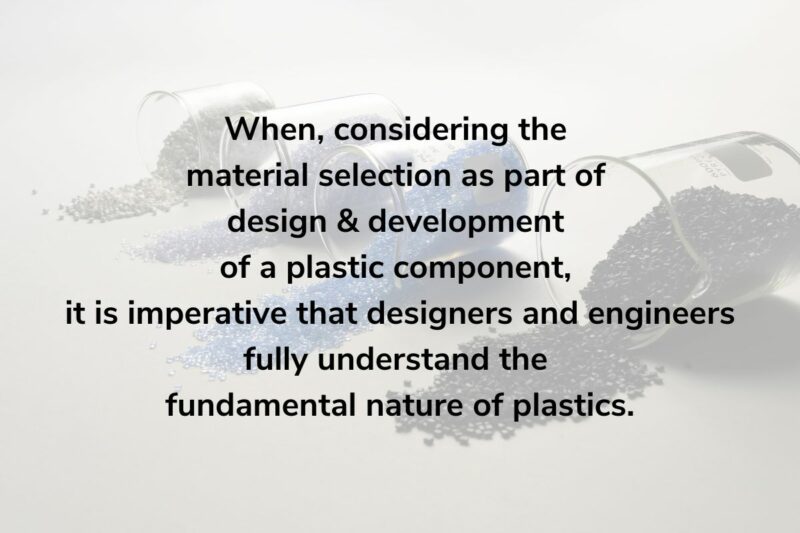Designing plastic components and the corresponding material selection can present significant challenges. The properties of plastics differ significantly from those of other materials, such as metals, glass, and ceramics. There are a number of key characteristics of plastic materials that need to be considered when designing parts or selecting an appropriate material for an application. These characteristics are the direct result of their molecular structure, made up of long polymeric chains of high molecular weight that are entangled into each other, but remain mobile and can slide past one another because they do not share chemical bonds with the other chains. If these factors are not taken into account, premature failure can result. These key characteristics of plastic materials are listed below.
- Plastics are viscoelastic materials, meaning that they display both elastic and viscous behavior simultaneously
- Plastics behave in a non-linear manner, consequently their properties cannot be predicted through extrapolation
- Plastics display temperature-dependent behavior, such that their properties can vary widely over relatively small temperature changes
- Plastics display time-dependent behavior under load, therefore their mechanical properties will change over time through creep and stress relaxation
- Plastics under the action of continuous tensile stress will eventually undergo molecular disentanglement and thus cracking, even well below the yield stress
- Plastics display strain rate-dependent behavior, meaning that their mechanical properties will vary depending on the rate at which the load is applied
- Plastics change chemically/physically in the environment, meaning that their properties can be altered by the setting in which they are placed
- Plastics are susceptible to the effects of chemicals, such that they can undergo swelling, chemical attack, and environmental stress cracking (ESC)
- Plastics are susceptible to weathering, and accordingly a wide range of properties can be altered through outdoor exposure
- Polymers produced through condensation polymerization are moisture sensitive, which can lead to hydrolysis if not dried properly prior to injection molding
- The plastic molding process can result in significant levels of molded-in residual stress, which is additive to externally applied stress
- The plastic molding process can produce weld lines due to converging melt flow fronts, which can be a point of weakness if stress is applied perpendicular to the flow direction, particularly in parts molded from fiber-reinforced resins
- Plastics show mechanical anisotropy due to the alignment of polymer molecules and high-aspect ratio fillers/reinforcement, and consequently their mechanical properties are directionally dependent
- Plastics exhibit notch sensitivity, such that their mechanical properties are dependent on geometry
These attributes need to be accounted for when designing a plastic component, or there is a risk of premature product failure.

